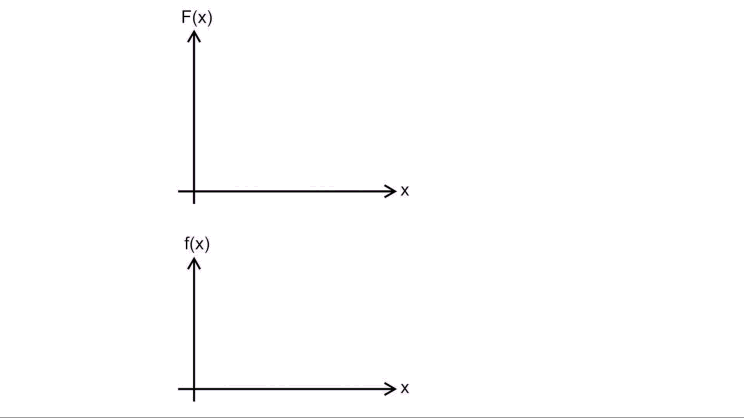数学笔记:极限、导数、积分

极限(Limit)
概念
c,L皆为实数,f: (- \infty, c - \delta) \cup (c + \delta, + \infty) \rightarrow \mathbb{R},当x \rightarrow c时,f(x) \rightarrow L当且仅当:任一个\epsilon > 0,必存在一个\delta > 0,使得若0 < |x - c| < \delta,则|f(x) - L| < \epsilon。
通俗理解
当x趋向于某值L时,f(x)的值趋向于某值A。
表达
符号表达:\lim_{x \rightarrow x_0} f(x) = A
特殊记号:
x \rightarrow x_0^+:x从右侧趋向于x_0,x恒大于x_0。
x \rightarrow x_0^-:x从左侧趋向于x_0,x恒小于x_0。
四则运算
\begin{aligned} \lim_{x \rightarrow x_0} (f(x) + g(x)) &= \lim_{x \rightarrow x_0} f(x) + \lim_{x \rightarrow x_0} g(x) \\ \lim_{x \rightarrow x_0} (f(x) - g(x)) &= \lim_{x \rightarrow x_0} f(x) - \lim_{x \rightarrow x_0} g(x) \\ \lim_{x \rightarrow x_0} (f(x) \cdot g(x)) &= \lim_{x \rightarrow x_0} f(x) \cdot \lim_{x \rightarrow x_0} g(x) \\ \lim_{x \rightarrow x_0} \frac{f(x)}{g(x)} &= \frac{\lim_{x \rightarrow x_0} f(x)}{\lim_{x \rightarrow x_0} g(x)} \end{aligned}夹逼定理(Squeeze theorem)
设I为包含某点a的区间,f,g,h为定义在I上的函数。若对于所有属于I而不等于a的x,有:g(x) \leq f(x) \leq h(x)且\lim_{x \rightarrow a} g(x) = \lim_{x \rightarrow a} h(x) = L,则\lim_{x \rightarrow a} f(x) = L。
其中,g(x)和h(x)分别称为f(x)的下界和上界。
连续函数(Continuous function)
对于定义域I中任意x_0,有\lim_{x \rightarrow x_0} = f(x_0),则称f(x)是一个连续函数。
注:本定义不严谨,只用于说明极限可用于定义连续函数。严谨定义参见连续函数 – 维基百科,自由的百科全书。
函数的连续性与(处处)连续的函数并不相同。函数可以在一段区间内连续,也就是说,连续性是一个局部性质。
复合的连续函数也是连续的。初等函数是连续的。
常用的结论
\begin{aligned} &\lim_{x \rightarrow + \infty} (1 + \frac{1}{n})^n = \lim_{x \rightarrow - \infty} (1 + \frac{1}{n})^n = e \\ &\lim_{x \rightarrow 0} \frac{\sin x}{x} = \lim_{x \rightarrow 0} \frac{\tan x}{x} = 1 \\ &\lim_{x \rightarrow + \infty} \sqrt[n]{n} = 1 \\ &\lim_{x \rightarrow 0} \frac{\arctan x}{x} = \lim_{x \rightarrow 0} \frac{e^x - 1}{x} = 1 \end{aligned}等价无穷小(大)量
设f在区间I上有定义,x_0在I中,若\lim_{x \rightarrow x_0} f(x) = 0,则称f为当x \rightarrow x_0时的无穷小量。
设当x \rightarrow x_0时,f与g均为无穷小量,若\lim_{x \rightarrow x_0} \frac{f(x)}{g(x)} = 1,则称f与g是当x \rightarrow x_0时的等价无穷小量,记作f(x) \sim g(x) \ (x \rightarrow x_0)。
类似地,等价无穷大量也可以如此定义。求极限时,可以利用它的性质进行代换。
高(低)阶无穷小量
对于两个无穷小量\alpha和\beta,如果\lim \frac{\alpha}{\beta} = 0,称\alpha为比\beta高阶的无穷小量,简称高阶无穷小量。类似地,\beta是\alpha的低阶无穷小。记作\alpha = o(\beta)。
通俗理解,在某一趋近过程中,\alpha \rightarrow 0比\beta \rightarrow 0快一些。
导数(Derivative)
概念
当函数f的自变量在一点x_0上产生一个增量h时,函数输出值的增量与自变量增量h的比值在h趋于0时的极限如果存在,即为f在x_0chu处的导数,记作f'(x_0)。
对于可导的函数f,x \mapsto f'(x)也是一个函数,称为f的导函数。
已知函数求导函数的过程为求导,已知导数求原函数的过程为不定积分。
对于连续函数图像,其一点处的导数即为图像在该点处切线的斜率。
运算与复合函数规律
\begin{aligned} (f(x) + g(x))' &= f'(x) + g'(x) \\ (f(x) - g(x))' &= f'(x) - g'(x) \\ (f(x) \cdot g(x))' &= f'(x) \cdot g(x) + g'(x) \cdot f(x) \\ (\frac{f(x)}{g(x)})' &= \frac{f'(x) \cdot g(x) + g'(x) \cdot f(x)}{g^2(x)} \\ (f(g(x)))' &= f'(g(x)) \cdot g'(x) \end{aligned}初等函数的求导
- 常函数:f(x) = c, f'(x) = 0
- 多项式函数:f(x) = x^a \ (a \in \mathbb{Q}^*), f'(x) = ax^{a-1}
- 三角函数:f(x) = \sin x, f'(x) = \cos x;f(x) = \cos x, f'(x) = - \sin x
- 指数函数:f(x) = a^x, f'(x) = a^n \ln a;特例:f(x) = e^x, f'(x) = e^x
- 对数函数:f(x) = \log_a x, f'(x) = \frac{1}{x \ln a};特例:f(x) = \ln x, f'(x) = \frac{1}{x}
洛必达法则(L’Hospital’s rule)
x \rightarrow x_0, f(x), g(x) \rightarrow 0,且x \rightarrow x_0, \frac{f'(x)}{g'(x)} = A,则x \rightarrow x_0, \frac{f(x)}{g(x)} = \frac{f'(x)}{g'(x)} = A。
注:严谨的表述见洛必达法则 – 维基百科,自由的百科全书。
偏导数(Partial derivative)
多元函数的偏导数是它关于其中一个变量的导数,而保持其他变量恒定(当成常数处理)。
函数f关于变量x的偏导数记为\frac{\partial f}{\partial x}。
积分(Integral)
定积分
定积分的定义有很多种,这里给出一个直观的描述。
对于一个给定的实值函数f(x),f(x)在一个实数区间[a, b]上的定积分\int_a^b f(x)\rm{d}x可以理解为在Oxy坐标平面上,曲线y=f(x)与x轴、直线x=a、直线x=b围成的有向面积。有向面积是指,x轴上方的面积为正,下方的面积为负。
注:定义参见积分 – 维基百科,自由的百科全书。
不定积分
f的不定积分(或称原函数)是任何满足其导函数是函数f的函数F。一个函数f的不定积分不是唯一的。
\int f(x)\mathrm{d}x = F(x) + C
其中f = F是f = f的不定积分。
微积分(第二)基本定理(牛顿-莱布尼茨公式)
\int_a^b f(x)\mathrm{d}x = F(b) - F(a)
其中,F'(x) = f(x)。
图形化的直观理解见下图。

(图片来自维基百科:微积分基本定理 – 维基百科,自由的百科全书)
常用结论
- \int x^k \mathrm{d}x = \frac{1}{k+1} x^{k+1} + C
- 分部积分法:\int f(x)g'(x)\mathrm{d}x = \int f(x)\mathrm{d}g(x) = f(x)g(x) - \int g(x)f'(x)\mathrm{d}x
- \int e^x \mathrm{d}x = e^x + C
- \int \frac{1}{x} \mathrm{d}x = \ln |x| + C
贝塔函数(Beta function,第一类欧拉积分)
\mathrm{B}(x, y) = \int_0^1 t^{x-1}(1-t)^{y-1}\mathrm{d}t
性质:
- 对称性:\mathrm{B}(x, y) = \mathrm{B}(y, x)
- 与伽马函数之间的关系:\mathrm{B}(x, y) = \frac{\Gamma(x) \Gamma(y)}{\Gamma(x+y)}
- 当x, y是正整数时,有\mathrm{B}(x, y) = \frac{(x-1)!(y-1)!}{(x+y-1)!}
其他性质参见:Β函数 – 维基百科,自由的百科全书
伽马函数(Gamma function,第二类欧拉积分)
\Gamma(z) = \int_0^\infty \frac{t^{z-1}}{e^t} \mathrm{d}t
如果n为正整数,则
\Gamma(n) = (n-1)!
其他性质参见:Γ函数 – 维基百科,自由的百科全书
